Marine communication refers to information exchange between vessels at sea or between vessels and coastal authorities. Historically, flags and Morse code were used, but radio technology now dominates. VHF radio is widely used for ship-to-ship and ship-to-shore communication. Distress signals can activate search and rescue operations coordinated by organizations like INMARSAT and COSPAS-SARSAT using satellites. EPIRBs automatically transmit distress signals via satellite, providing location data using Doppler shift measurement which is relayed to rescue coordination centers. The GMDSS system divides ocean areas into categories to coordinate appropriate emergency communication equipment depending on distance from shore.



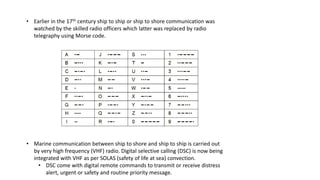
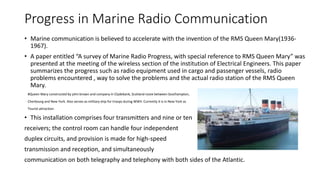
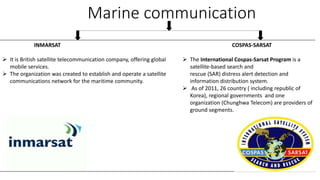

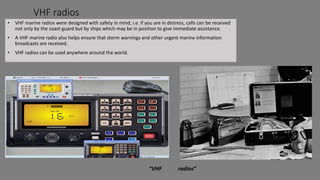

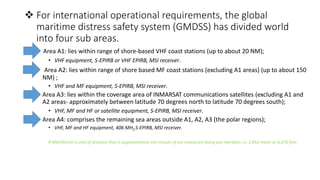
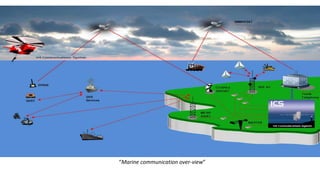
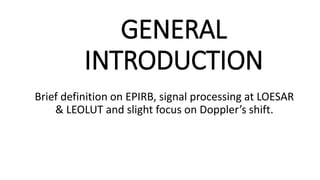

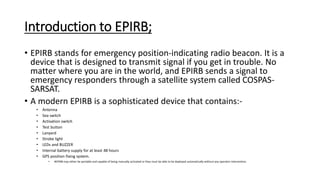
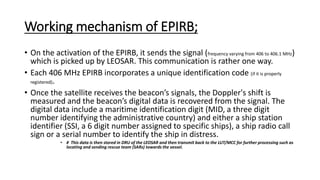


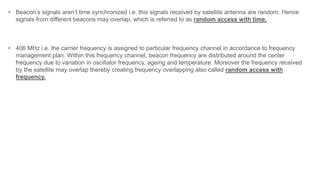
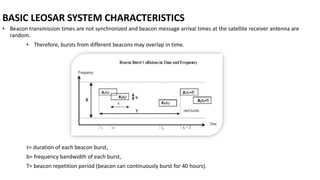
![Hence at period (t1 + T);
Beacon overlap at frequency domain may disappear {which is true in every case} i.e. each beacon’s frequency is different
ranging from 406 MHz to 406.1MHz.
Also, the message repetition period of both beacons may be slightly different, a collision in time domain maynot
necessarily repeat after few signal transmission.
When any two beacon’s signal overlapped at time and frequency domain have equivalent signal power then both the
signals are lost which is worst case and probably never occurring one.
If overlapped signal at [t and f] have different signal power than signal having high power is received correctly while the
weaker message is lost.](https://image.slidesharecdn.com/marinecommunication-151019012151-lva1-app6891/85/LEOSAR-and-LEOSAT-20-320.jpg)







